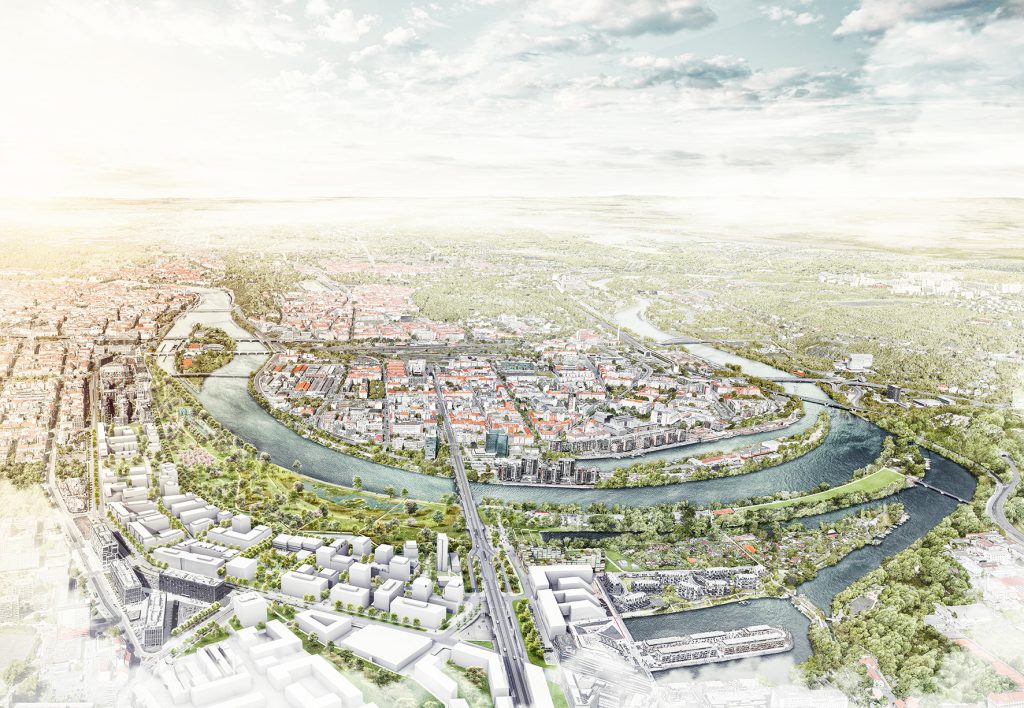Paint by Drone

The italian architect and engineer Carlo Ratti has developed a portable technological solution to paint urban facades by app controlled drones.
Billboard
Skyscrapper
Halfpage
Is it possible to change the surface of urban façades from one day to the next? Carlo Ratti, an Italian architect, engineer, and visionary has developed Paint by Drone, a portable technological solution that aims via app to turn swiftly greying urban facades into colourful and artful spaces. Does this portend a new era in Urban Art?
topos: Mr. Ratti, do you feel yourself to be a pioneer in the field of drone graffiti painting?
CARLO RATTI: Not in this regard. Others have experimented with drone graffiti as well. Think of the New York graffiti artist Katsu who launched a spray paint quadcopter. What is new about Paint by Drone is that we work with a high-precision swarm and can turn citizens into artists. The drone system in this instance is just an extension of their hands to create a large-scale, collaborative piece of art.
topos: How did you come up with the idea of “Paint by Drone”?
C R: Drones are an increasingly common part of our everyday life. Did you know that according to the U.S. Federal Aviation Administration, by 2020 there could be 1.3 million quadcopter drones flying in the United States’ skies alone? The idea of employing drones in different contexts is something that fascinates me. In 2013 at MIT, we launched Skycall and used an autonomous quadcopter as a personal guide tour on campus.
topos: What did you discover in the course of that project?
C R: With Skycall, we investigated two main development paths of UAV (Unmanned Aerial Vehicle) technology: a drone’s capacity to autonomously sense and perceive its environment, and its ability to interface and interact with people. So the project “Paint by Drone” is a logical step forward in this research path.
topos: Sounds really innovative. And how does the graffiti system work in detail?
C R: It employs a set of one-metre-wide UAVs, each equipped with sensors and carrying a spray paint tank. The content is submitted digitally, via app. Any façade can become a space to showcase new forms of open-source, collaborative art, or to visualize the heartbeat of a metropolis through real-time data.
topos: So will the future city be a chameleon, changing its face from one day to another?
C R: I like that idea! Architecture has often been described as a kind of “third skin” – in addition to our own biological one and our clothing. For too long, it has functioned more like a corset. New digital technologies and distributed intelligence such as “Paint by Drone” have the potential to transform it and give form to an endlessly reconfigurable environment. In the future, we could imagine an architecture that adapts to human need rather than the other way around – a living, tailored space that is moulded to its inhabitants’ needs, characters, and desires.
topos: Mr. Ratti, hand on heart: Does Paint by Drone coexist with the traditional form of graffiti or street art? Or is this the end of street art as we know it?
C R: It’s not the end! Paint by Drone’s aim is neither to wipe away nor to compete with street art. Rather, it shows new ways to engage with the built environment. I call it “phygital graffiti”, and it is the idea of leveraging drones and, more generally, digital technologies to create participatory works of public art.
topos: How about the feedback of street artists? What do they think about your innovation?
C R: We had entertaining discussions with many street artists, who are really enthusiastic about the new possibilities for artistic expression. They agree with me that the “Paint by drone” project opens new doors, since the artistic input can come either from a crowd-sourced platform, from a curator orchestrating the contributions of several people, or from a single artist. In the crowd-sourced case, people can use a mobile app to draw their own designs, imagining how that would convert into graffiti at the urban scale.
topos: If theoretically everybody can be an urban artist and can interact with city space via drones – what is your future-city vision, then?
C R: To use one of the 1968 slogans from before I was born: Imagination au pouvoir. Power to imagination!
topos: What would a 20-years-younger Carlo Ratti think of Paint by Drone?
C R: That you could use it to hack the city – and perhaps for unexpected pranks…












